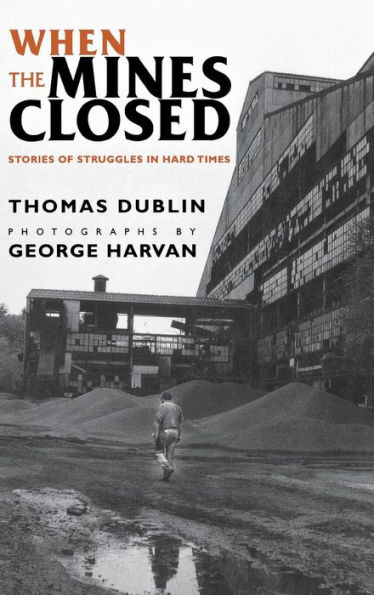
When the Mines Closed: Stories of Struggles in Hard Times
272
When the Mines Closed: Stories of Struggles in Hard Times
272Hardcover
-
PICK UP IN STORECheck Availability at Nearby Stores
Available within 2 business hours
Related collections and offers
Overview

Product Details
| ISBN-13: | 9780801434624 |
|---|---|
| Publisher: | Cornell University Press |
| Publication date: | 08/10/1998 |
| Series: | 6/1/2000 |
| Pages: | 272 |
| Product dimensions: | 6.12(w) x 9.25(h) x 0.88(d) |
| Age Range: | 18 Years |
About the Author
What People are Saying About This
"One of Thomas Dublin's most striking qualities is his commitment to uncovering every possible shred of evidence in his pursuit of historical 'truth.' Another is the grace and clarity of his prose."
We hear much these days about the dignity of work. When the Mines Closed reminds us again that it is not work that dignifies life, it is people who dignify work. This is especially so when that work is dangerous, difficult, and demeaning. It is this struggle to maintain human dignity in the face of a changing world which illuminates the testimonies Dublin has collected. Through the prism of these narratives we are allowed entry into a very special place at a very special time.
A poignant and powerful testimonial in words and photographs to a vanished way of life.
An important contribution to the history of the coal industry and its economic and social impact.... Dublin's oral history is culled from 90 interviews that considered what it was like and what it meant to work in the anthracite mines of eastern Pennsylvania's Panther Valley and what life was like in a mining community. At their peak, the mines in this region employed nearly 175,000 workers, mostly immigrants; by the time Dublin began his interviews, only 1,400 persons were left working in these mines. Six men and women tell how they toiled in the mines or else how they struggled to help their families survive. Their moving stories are enhanced by a collection of nearly 100 photographs.
What makes this volume of superbly edited oral histories of deindustrialization so special is the rich dimension Thomas Dublin brings, in two senses, to a subject too often approached in terms of contemporary victimization. His topic is not recent plant closings but rather the transformation of the Pennsylvania anthracite region in the 1950s, a story his subjects place in complex biographical and historical perspective more than thirty years later. And far more than its title would suggest, the interviews focus on the fuller fabric of individual, family, community, and work life that subjects brought to the closings and the struggles—and through which they understand and interpret their own historical experience. All this is complemented by a remarkable archive of both historical and current photographs, individual and contextual, by regional photographer George Harvan. The result is a landmark study in the growing documentary literature of industrial and regional transformation. It demonstrates how life histories and life images, beyond their intrinsic human dimension and power, open instructive, indispensable historical vantages onto immensely complex social processes and experiences.
Thomas Dublin's When the Mines Closed, takes the reader inside the lives of several families within three mining communities of south-east Pennsylvania... This book provides much needed voices to the struggle of coal-mining families, and the economic and social fall-out of the coal industry's downsizing, mechanization and inability to provide job security for hardworking families and their communities... offers evidence of the often illusory realization of democracy for workers in the U.S. under a system that benefits corporations often at the expense of the common man and women.
